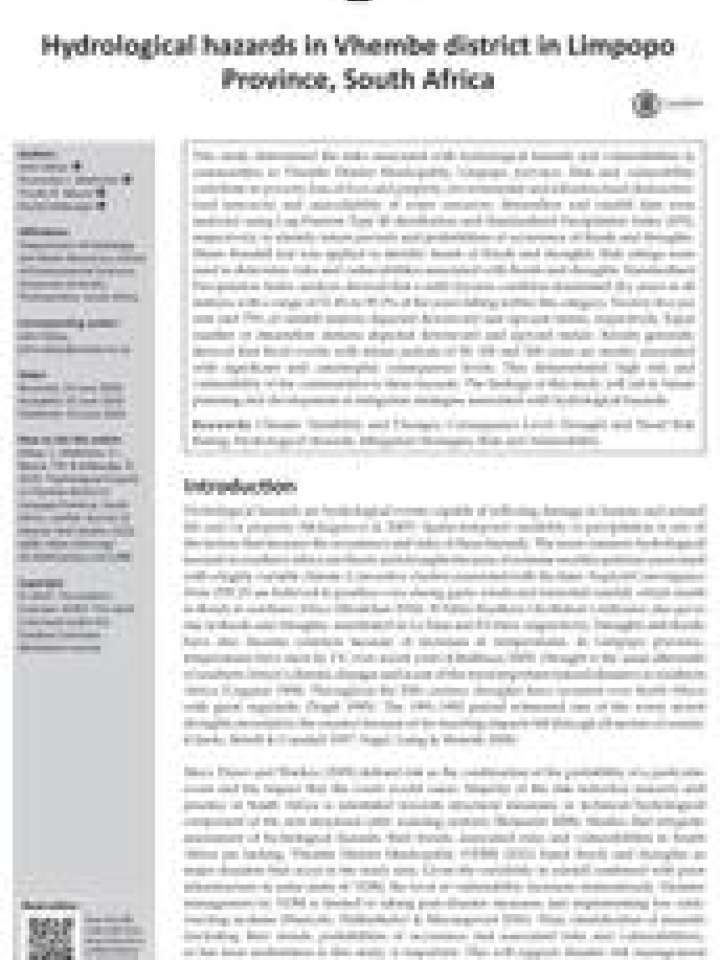Hydrological hazards in Vhembe district in Limpopo province, South Africa
This study determined the risks associated with hydrological hazards and vulnerabilities to communities in Vhembe District Municipality, Limpopo province. Risk and vulnerability contribute to poverty, loss of lives and property, environmental and infrastructural destruction, food insecurity and unavailability of water resources. Streamflow and rainfall data were analysed using Log-Pearson Type III distribution and Standardised Precipitation Index (SPI), respectively, to identify return periods and probabilities of occurrence of floods and droughts.
Mann–Kendall test was applied to identify trends of floods and droughts. Risk ratings were used to determine risks and vulnerabilities associated with floods and droughts. Standardised Precipitation Index analysis showed that a mild dryness condition dominated dry years in all stations with a range of 22.4% to 59.2% of the years falling within this category. 25% and 75% of rainfall stations depicted downward and upward trends, respectively. Equal number of streamflow stations depicted downward and upward trends.
Results generally showed that flood events with return periods of 50, 100 and 200 years are mostly associated with significant and catastrophic consequence levels. This demonstrated high risk and vulnerability of the communities to these hazards. The findings of this study will aid in future planning and development of mitigation strategies associated with hydrological hazards.
Explore further
